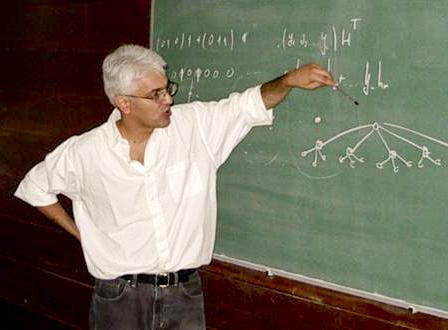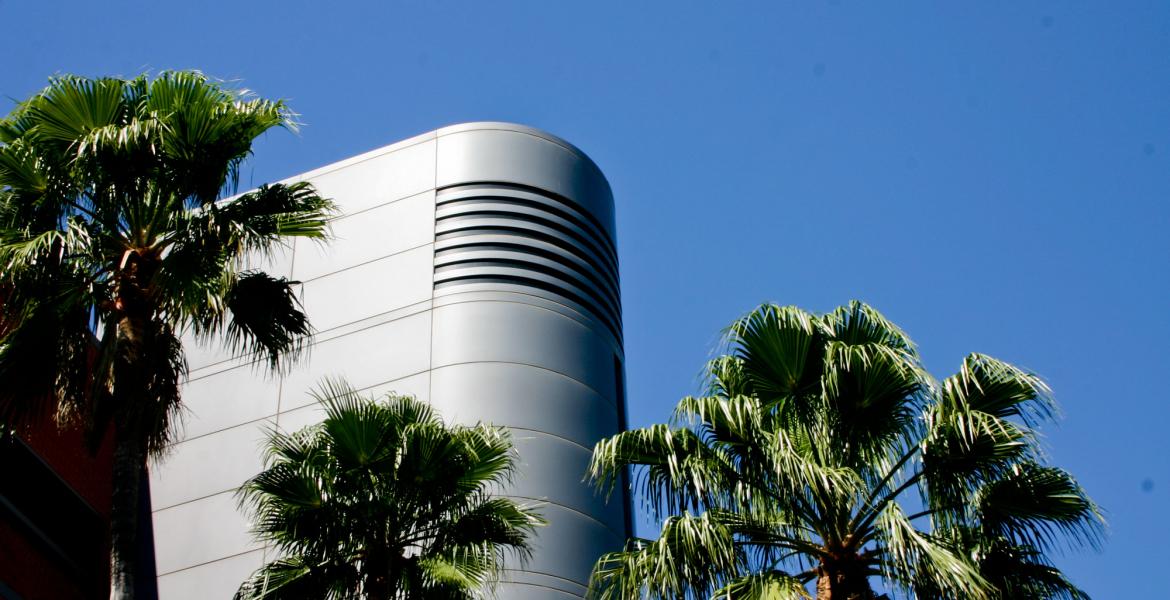Da Vinci Circle Selects New Fellow
Bane Vasić has been named the 2008 da Vinci Fellow by the UA College of Engineering. Vasić is professor of electrical engineering and mathematics in the Department of Electrical and Computer Engineering. The fellowship is sponsored by the College’s giving society, the da Vinci Circle.
Fellows are selected for their substantial distinguished and sustained contributions to teaching, research and service. A new fellow is named each year, and each fellowship runs for two years. Fellows receive $10,000 during the two-year span of the appointment.
Vasić is an alumnus of the University of Niš in Serbia, where he got his engineering diploma, master’s degree and doctorate in electrical engineering. “I go back to Niš every year to give a talk or teach a short course at the university and visit my parents and my brother, Bata," Vasić said. "My brother teaches computer animation and makes TV commercials. Unlike me, who works with mathematical models, he works with fashion models."

Vasić has been at UA since 2000. Before that he was at Bell Labs, where he developed an error-correction algorithm that is in widespread use in modern hard drives.
“I will use the fellowship money on supporting my students and myself to go to conferences,” Vasić said. “I have a really good research group, and sending my students to conferences is not only business, it is also a reward for their hard work.” Vasić is a great believer in sending students to technical conferences because, he said, “they can reassure themselves that what they do is relevant and important, not just a crazy idea of their advisor.” He also believes conferences instill a sense of his expectations and standards. “You should see them when they come back -- all charged and excited,” he said.
Vasić’s research area is information theory and error correction coding theory. All natural and artificial systems involve the storage and transmission of information, and all information tends to deteriorate naturally with time, which causes errors in that information. “To survive and function, systems must be able to correct these errors,” Vasić said. “And I study the mathematical foundations of error correction.”
Error correction coding theory sounds esoteric, but it underpins every click of your browser and every “play”, “save” or “call” operation on your media player or cell phone. “When you save your homework to a hard drive or send an e-mail, you rightfully expect the system to not distort the data you put into it,” explained Vasić. “And almost always it doesn’t distort – but not because the system is perfect.”
Error Correction Everywhere
He means that if you were to look inside your hard drive, you would not believe that a system with such tolerances could work at all. Think of saving data on a hard drive as a mailman in a Boeing 767 flying over the neighborhood and putting mail in mailboxes. He occasionally misses some mailboxes. From time to time he even hits a house, but takes off again and continues his job. When you click “save” you are not aware of this struggle.
The process is similar when you sunbathe. Ultraviolet rays damage your DNA approximately 50,000 times a day, but you generally don’t die from sunbathing because a mechanism exists that commands an army of proteins and sends them to repair the damage.
In these examples the information is preserved -- your homework, your e-mail or your genetic code -- because it is protected by an error correction code.
Currently, Vasić’s largest research effort is a five-year $2.5 million dollar project in the area of error control coding for optical networks, funded by the National Science Foundation Information Technology Research program. His research is also funded by industry. “Since I joined The University of Arizona,” Vasić said, “I have had continuous funding from the Information Storage Industry Consortium and Seagate Technology. Both sponsors view the research projects as long-term collaborations, and I have the privilege of getting first-hand information about new technologies, and an opportunity for implementing my research results in Seagate products."


